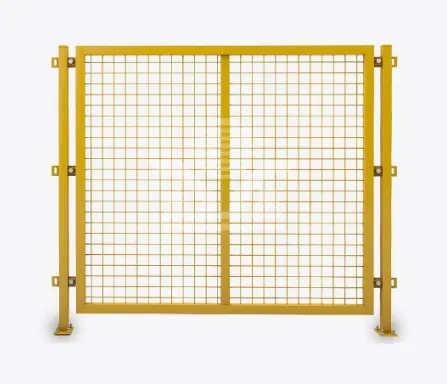The Importance of Metal Hoarding Fencing in Urban Development
In the ever-evolving landscape of urban development, the use of metal hoarding fencing has become a crucial element in maintaining safety, security, and aesthetic appeal. Constructed from robust materials such as steel or aluminum, metal hoarding fencing serves various purposes on construction sites, events, and public spaces. Understanding its benefits can shed light on its growing popularity among contractors and city planners.
Safety and Security
One of the primary functions of metal hoarding fencing is to ensure safety on construction sites. By creating a physical barrier, it prevents unauthorized access, thereby reducing the risk of accidents and ensuring that pedestrians are kept at a safe distance from potentially hazardous areas. This is particularly important in densely populated urban environments, where the presence of heavy machinery and ongoing construction can pose significant risks to bystanders.
Moreover, security is heightened due to the rigid structure of metal fencing. Unlike plywood or plastic alternatives, metal hoarding is less susceptible to vandalism and theft, offering a more durable option for safeguarding valuable materials and equipment on-site. This added layer of security can deter potential intruders and protect construction investments.
Aesthetic Appeal
While the functional aspects of metal hoarding are essential, its aesthetic contributions cannot be overlooked. Construction sites are often viewed as eyesores in bustling urban settings; however, metal hoarding can be designed to enhance the visual appeal of the area. Many companies opt to install custom graphics, promotional banners, or public art on their fencing, transforming an otherwise bland structure into a vibrant canvas that reflects the vision of the project and engages the community.
This approach not only makes the construction site more visually appealing but also fosters good relations with local residents and businesses. By showcasing artistic designs, companies can create a sense of community involvement, making the project feel more inclusive and transparent.
metal hoarding fencing

Environmental Responsibility
In an age of increasing environmental awareness, metal hoarding fencing also presents a sustainable solution. Unlike traditional wooden hoarding, which can contribute to deforestation, metal fencing is often made from recycled materials and is fully recyclable at the end of its life cycle. This circularity helps reduce waste and supports eco-friendly construction practices. Furthermore, many manufacturers are now producing lightweight and modular options that minimize transportation emissions and make installation and removal more efficient.
Versatility and Durability
Another advantage of metal hoarding fencing is its versatility. It can be adapted for various applications beyond construction, such as enclosing public events, fencing off outdoor markets, or securing temporary spaces. This adaptability allows for a wide range of uses, making it a popular choice for many industries.
The durability of metal hoarding is another significant factor in its favor. It withstands harsh weather conditions, resists corrosion, and requires minimal maintenance, offering a long-term barrier that can be relied upon throughout the construction process. This durability translates into cost savings for companies, as they can avoid frequent repairs or replacements associated with less resilient materials.
Conclusion
In summary, metal hoarding fencing plays a vital role in modern urban development. Its benefits, encompassing safety, security, aesthetic enhancement, environmental responsibility, and versatility make it an indispensable asset for contractors and city planners alike. As urban areas continue to grow and evolve, the demand for effective and innovative solutions like metal hoarding fencing will undoubtedly remain strong, contributing to the safe and efficient development of vibrant cityscapes.
-
The Best Metal Mesh Solutions: Expanded Aluminum Metal vs. Expanded Stainless Steel Metal
NewsSep.10,2024
-
Round Perforated Sheets vs. Hexagonal Perforated Sheets vs. Embossed Perforated Sheet Metal
NewsSep.10,2024
-
Perforated Metal Sheets
NewsSep.10,2024
-
Experience The Excellence Of Stainless Steel Grating
NewsSep.10,2024
-
Discover the Versatility Of Metal Mesh Expanded Forming Machines
NewsSep.10,2024
-
Discover The Advantages Of Steel Grating For Sale
NewsSep.10,2024
Subscribe now!
Stay up to date with the latest on Fry Steeland industry news.

